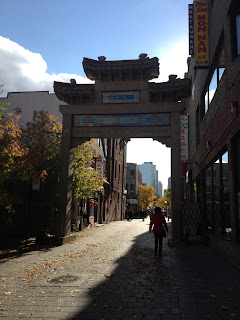I play a lot of video games of all kinds. I consume games like people consume movies. I play some good ones, I play some bad ones, and I play some that are just okay. I play video games that range across a spectrum of genres including action, adventure, drama, crime, fantasy, puzzles and so forth. I seldom stop watching a movie until it's done regardless of whether I'm enjoying it thus far or not, and I do the same with video games, playing them until the end. By the time I left Canada, I was amongst the top 250 Playstation 3 players in the country when it came down to the sheer size of my virtual "trophy cabinet."
I want to draw attention to a specific video game series, though, that might have eased my transition into Tokyo to a certain degree, and that series is called Ryu ga Gotoku. The local name for the North American release is simply "Yakuza." The series is currently at its 4th iteration, with various spin-offs and a 5th release due for late December in Japan.
 |
| Promotional art for Yakuza 4 |
 | ||
| Kamurocho as seen in the video game. |
 |
| Kabukicho as seen on...wikipedia. |
Say, for example, my in-game character gets hungry, I can go to Matsuya, the beef-bowl restaurant, and order pork on rice for 395¥. The exact price it would be in real life. The game features a shocking number of real-life Japanese stores, including Karaokekan, the karaoke chain, and DonQuihote, the variety store, amongst a tonne of others. You could basically discover the food items on every restaurant menu before even stepping into an airplane for Japan.
Shit, if you order whiskey in the game in certain bars, the bartender even describes to you the taste of the malt. It's pretty deep already.
 |
| Yuuna features within the game as herself. |
We're not finished yet. The Yakuza series not only features real places, but also real people. Granted, the main characters are all fictional, but some of the figuring characters are not. The series is notable for auditioning young women to star in the game as themselves, playing the role of hostesses in hostess clubs. I'll go into detail about hostesses some other day maybe, but they're essentially girls you pay to have a drink with you (yes, I also learned that in the game.) Although half of what they say in-game is idle talk about their dogs or whatever, these hostess characters do give a sense of what Japanese people are truly like, as they talk about things they do, what they like and what they don't, and where they're from and what those places are like.
One of the hostesses (seen on the right), for instance, describes in some detail how it was for her to have been a Chinese person raised in Japan.
But last, and most interesting of all, to me, was that the game allows you to experience authentic Japanese pass-times, both traditional and modern. Through the Yakuza series, I've learned several things that even my Japanese friends don't know. Within the virtual underground gambling halls of Tokyo, I've learned to play the traditional Japanese card game Koi Koi, which I later on taught others to do as well. I know how Pachinko, the madly popular Japanese equivalent to a casino game, works. I've also learned to play Oicho-kabu, Cee-Lo and Cho-Han, and that was without even first going in with the intention to learn. I could easily turn the game on and teach myself how to play Shogi (Japanese chess) and Mahjong as well. Maybe I will.
 |
| Oh wow, he actually got Ino-shika-cho. |
Embedded is a trailer for the 5th installment of the main series.

















